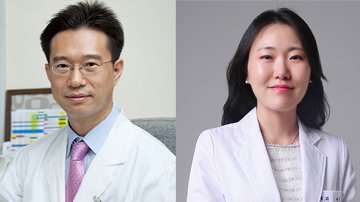Physical activity deemed safe for general adults with hypertrophic cardiomyopathy (HMC)
- Large-scale study conducted among 7,666 patients by Seoul National University Hospital research team
- Current guidelines recommend avoiding physical exercise for fear of sudden cardiac death
- Contrary to conventional wisdom, it has been found that risk of death decreases with amount of physical exercise

A team of Korean researchers has announced the results of a new study that suggests a radical change in the treatment of hypertrophic cardiomyopathy (HCM).
Professor Hyung-Kwan Kim’s research team from the Department of Cardiology at the Seoul National University Hospital (includes Professor Hyun-Jung Lee and medical doctor Soon-Il Kwon) announced on October 20 the results of their study in which they monitored for an average of 5.3 years a total of 7,666 patients with hypertrophic cardiomyopathy who received medical checkups between 2009 and 2016. According to the study, HCM patients who exercised more vigorously were less likely to die. The results of this study differ from conventional wisdom.
Hypertrophic cardiomyopathy is characterized by left ventricular hypertrophy without any secondary causes. In severe cases, it can trigger arrhythmias which can lead to sudden cardiac death. In fact, HCM is the most common cause of sudden cardiac death in athletes. World-famous baseball, soccer, and badminton players are known to have suddenly died of HCM.
Until now, medical guidelines in the U.S. and Europe have recommended that patients with HCM avoid exercise in order to prevent arrhythmias and sudden cardiac death. However, several studies have shown fewer cases of sudden cardiac death in general adults suffering from HCM, unlike athletes, and additional studies were needed to determine whether exercise should indeed be restricted or not for ordinary patients.
The research team developed an indicator capable of measuring intensity of exercise through survey questions. The patients were divided into 3 groups depending on their intensity of exercise, and the mortality rates were compared between the groups. As a result, the general death risk and cardiovascular disease related death risk of Group 3, consisting of patients who did high intensity exercise, were lower than that observed in Group 2, which consisted of patients who did moderate intensity exercise, by 22% and 25% respectively. In other words, the higher the intensity of exercise, the lower the risk of death was in ordinary patients of HCM.

Figure 1.
Total death risk and cardiovascular disease related death risk in HCM patients depending on intensity of physical exercise. The higher the intensity of exercise, the lower the risk of death.
BLUE: Group 1 (Low intensity exercise)
ORANGE: Group 2 (Moderate intensity exercise)
GREY: Group 3 (High intensity exercise)
22% reduction in total death risk and 25% reduction in cardiovascular disease related death risk.
“The results of this research are significant because they demonstrate that patients with hypertrophic cardiomyopathy can also live longer if they exercise, just like healthy ordinary people,” said Professor Hyung-Kwan Kim. “This study lays the foundation for recommending the right amount of daily exercise to HCM patients.”
“This study will contribute to reducing unnecessary fears about physical exercise that patients of hypertrophic cardiomyopathy may have, and will also help to improve existing guidelines for the treatment of HCM,” emphasized Professor Hyun-Jung Lee.
The study was published in a recent issue of the British Journal of Sports Medicine (IF=12.022).